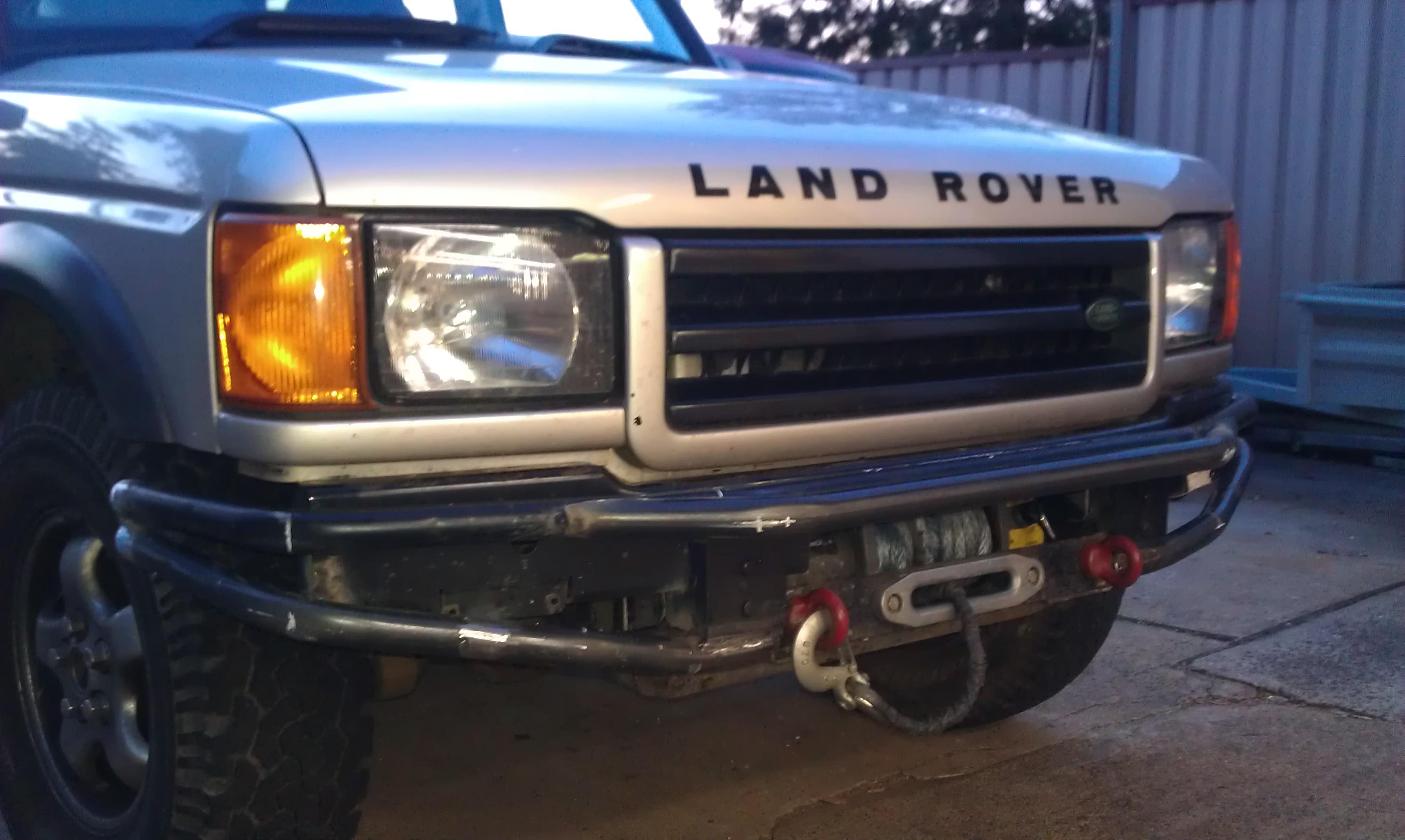
Originally Posted by
clubagreenie

Exactly right, I've always wondered about how one can engineer something to crush at a certain rate but not stretch under an opposing rate.
I have a custom winch cradle which fits behind the std bumper and outlets under the opening in the lower section. It's fixed directly to the chassis and recovery points, 2 x 8T eye bolts screwed into the winch cradle (10mm plate webbing on 230 x 75 parallel flange channel) and also a spread plate and nut behind. These were tested to breaking point, not torn out but the flange of the channel deformed and the eye bent at 20+T and were still in place at 30+T, after that we stopped. Any more the front of the disco is hitting someone in the head I think.
Nothing stuck out forward of the plastic, was attached to the chassis and also sat onto the steering guard bar that's across the front so it can't rotate if it moved at all.
In regard to "rating" I get everything I make for myself tested locally anyway. For example, I make my own receiver hitch points for rear recoveries. Manufactured from 4140 steel, chosen as it's used also as a high strength material used for tool holding and other structural applications I make a new pin as well to match. With a D1 bar scavenged from the wreckers, bolted to a test bed and a single line pull on a 6.5T shackle through the 4140 hitch & pin it actually deformed the bar slightly just before tearing the pin through the receiver at over 20T.
My new planned front points will be made a bit lighter, but I was thinking of having a secondary backup for the point as a smaller steel cable run from somewhere back that is attached to an independent point on the recovery point or maybe to attach to the line/sling/???? so in the event of failure it's still attached and not flying off. Opinions???
Sounds like an impressive system. Any chance of some pics?
D4 MY16 TDV6 - Cambo towing magic, Traxide Batteries, X Lifter, GAP ID Tool, Snorkel, Mitch Hitch, Clearview Mirrors, F&R Dashcams, CB
RRC MY95 LSE Vogue Softdash "Bessie" with MY99 TD5 and 4HP24 transplants
SADLY SOLD MY04 D2a TD5 auto and MY10 D4 2.7 both with lots of goodies



 Reply With Quote
Reply With Quote


Bookmarks